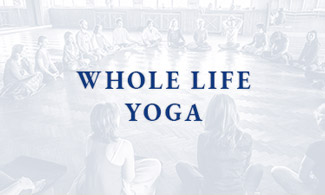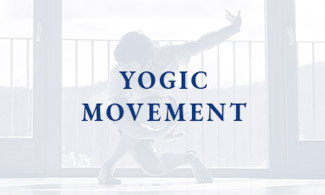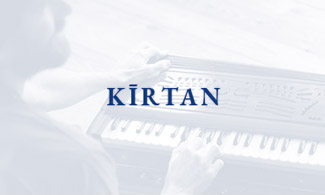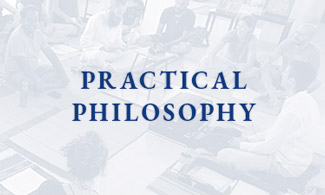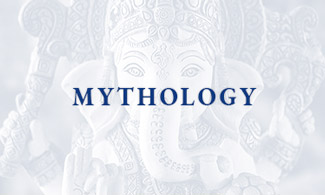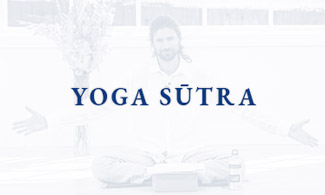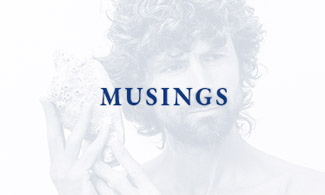
Rehab Recipe: Yogic Movement
I sometimes say there is no such thing as merely physical yoga practice, or merely intellectual or devotional practice. If it’s yoga then it will be addressing the whole human being.
Yogāsana practices offer many wonderful benefits but it is only one part of my movement diet in which I like to include lots of different, complementary nutrients.
As movement personality Ido Portal says in the still illuminating ‘Cruel Tutelage of Ido Portal’ video, everything (every type of movement activity) has a price: the barbell, the rings, the yogāsana, the gymnastics, the trail running, the cycling, even swimming has a price. They all have tremendous benefits too of course, but one thing Ido Portal’s video points out is that no one activity can provide the full spectrum of movement nutrition our organisms really thrive on.
I have come to think of it a bit like food. Sometimes it has been said that ‘man cannot live on bread alone’. This was said when wheat was still very much a super food and one almost could, before we started messing around with it and affecting its digestibility for the sake of quicker harvests and faster breadmaking. Yogāsana alone, or walking alone, or these two plus swimming alone are a good start but to really nourish and tend the field of our bodily chariot, I think it is well worth developing the habit of plenty of diverse movement ingredients.
I think of it a bit like this:
Rhythmic steady state activities like walking, hiking, cycling to and from work/town, activities in which we get a good dose of bipedal locomotion or at least in which we move our legs a lot, are a bit like carbohydrates. We have evolved as bipeds and while we can do better than say equines without walking and running, these types of motion really help our bodies flush out toxins and keep things connected. Many activities that people tend to class as ‘cardio’ we can put here in this group too.
But we can’t live on rice alone, we need protein to keep the system regenerating. We might think of resistance activities that stimulate the tissues to regenerate stronger or as strong as before as being like protein.
And that is all that a lot of gym-based models of fitness really offer: rice and chicken. Okay for a while, but sooner or later, or rather sooner and later, we’re going to need some fruit and veg. And we’re going to need some good, real fat.
I think of the type of joint and spinal movements that I typically start my day with as my basic vitamins and minerals, the nutrients that will help everything else do its job.
To help everything else do its job of course, I also need a good amount of fibre, all the more reason to involve copious helpings of fresh fruit and veg in the daily diet. In movement terms I think of activities that involve rhythm and coordination as helping provide the fibre.
Which brings us to the super nutrient – fat: the fat that helps hold everything together, even in people on the very lean side like myself. Reflexively, I would put here those activities that combine rhythm and coordination and strengthening and mobility. Because while we can train these components in relative isolation, in real life application we can often suffer if we aren’t able to mobilise them with coordinated ease. However, more essentially, I would say that the super nutrient is gratitude, this is the magic ingredient that is going to help me engage in whatever movement activity or practice it may be in ways that will nourish me that much more deeply.
One person’s food is another person’s poison. The ideal diet for one person may be totally unsuitable for another. Same with movement. Some of us may thrive on a diet richer in protein, some may do well on plenty of carbs. But we each have to respect the reality of our constitution and situation. By building up a yogic movement toolkit, we can apply the right type of medicine, feed ourselves the right type of nutrition to foster deeper equipoise, resilience and vitality.
The techniques and principles of yogāsana are tremendously valuable for deepening our understanding of our own physiology and learning to use our bodies, senses, our proprioceptive and kinaesthetic intelligences as a unit. Learning to work with bandha, the invisible support bandage we can activate by engaging around joint complexes so as to facilitate more effective flow of energy, is tremendously useful. As we learn to amplify the ha of heating and stimulating and the ṭha of cooling and relaxing, we can equip ourselves with refined and ready-to-deploy awareness of our innate bodily capacities. I love yogāsana and have spent probably more than twenty thousand hours practising it. I have taught thousands of yogāsana classes – I used to teach several hundred a year during the early years of my yoga teaching career. Still, after those early years, I noticed that my body was not satisfied, was not feeling how it longed to. When I first started yogāsana, I came to the mat carrying a lot of imbalances from the sports I had dedicated much of my youth too. I probably had twenty thousand plus hours of basketball, football, tennis, field hockey and such in my young body’s memory. Yogāsana was like a vitalising and healing balm, and the demanding isometrics and flow of ashtanga vinyasa in the heat of tropical Thailand left me feeling really good in my body. A few years later though, a lot lighter – not that I was ever ‘heavy’ – I was again out of whack. My body was craving curved lines, and my sensory intelligence was feeling the lack of fast twitch, coincidence-avoidance, teamwork, reaction and reflex-work whole system engagement I had feasted on when playing sports. While in the pollution of Bangkok I had found scant opportunity for much dynamic exercise beyond swimming and yogāsana. If I ran in the streets or played basketball outside I would sweat the smell of engine pollution, and feel not so great. Leaving Thailand I started once again to re-educate my palate and slowly over the next few years regain and renew broader movement capacities.
Yet at this point, after being steeped in yoga principles for several years I did so through a yogic lens. Yoga is a rehabilitation project. It is about re-membering ourselves: bringing all the members of the gang of our being into dynamic mutual support. Including those parts of ourselves that yogāsana does not reach: like our quick reaction capacities and our fast twitch muscle fibres, and our capacities to improvise and move in response to unpredictable stimuli.
As I began to rehabilitate these capacities I did so working with yogic principles. Fifteen years on I know that the yoga principles have hepled me so much. For example in the last couple of years when I was working with an injury. From August 2021 until my surgery in March earlier this year I was working with a significant limitation, and it affected everything, notably my digestion, my posture and my energy levels. However, it did so much less than it might have done because I had plenty of tools that I could work with in my kit. For nineteen months I was not able to fully extend my left leg, and was not able to get close to full flexion. Yet most people did not notice I had an impairment. I did of course. But because I was able to keep moving, I was able to mitigate the deleterious side effects of the injury and prehab for the surgery to facilitate a recovery which all the surgeons and physios I saw found quite remarkable. As one of the personal trainers who would also frequent the park where I would go for my morning and afternoon movement almost every day while in South Africa put it, ‘You are the example of why it is so beneficial to have a broad spectrum movement practice. The marathon runner who only runs gets an injury and is stuck, someone like you can go to the gym, do calisthenics, you have all that yoga, tai chi movement toolkit, it’s super inspiring man…’
When I first saw him a couple of weeks post surgery I shared just how grateful I was to be able to walk and enjoy moving and being outside. In recent days I have been able to run pain free and am feeling so much gratitude for that.
And this, as I was mentioning before, I would say is the super nutrient, the one that amplifies the benefits of whatever we are doing. Gratitude not only promotes contentment, but also awareness, so when we move with gratitude, we are likely to do so in ways more conducive to deep nourishment and revitalisation.
There are so many ways to practice yoga.
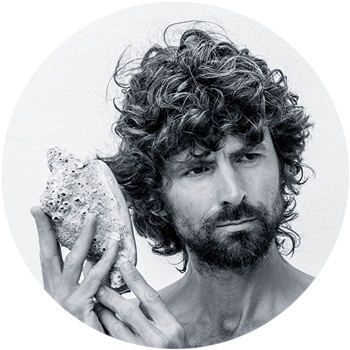
James Boag | Whole Life Yoga
The yoga of the whole human being. Practical philosophy, storytelling, movement, inquiry, looking in ways that reach beyond our habitual ways of looking.
Listen to James’ unique whole life yoga perspectives on the WHOLE LIFE YOGA podcast.

